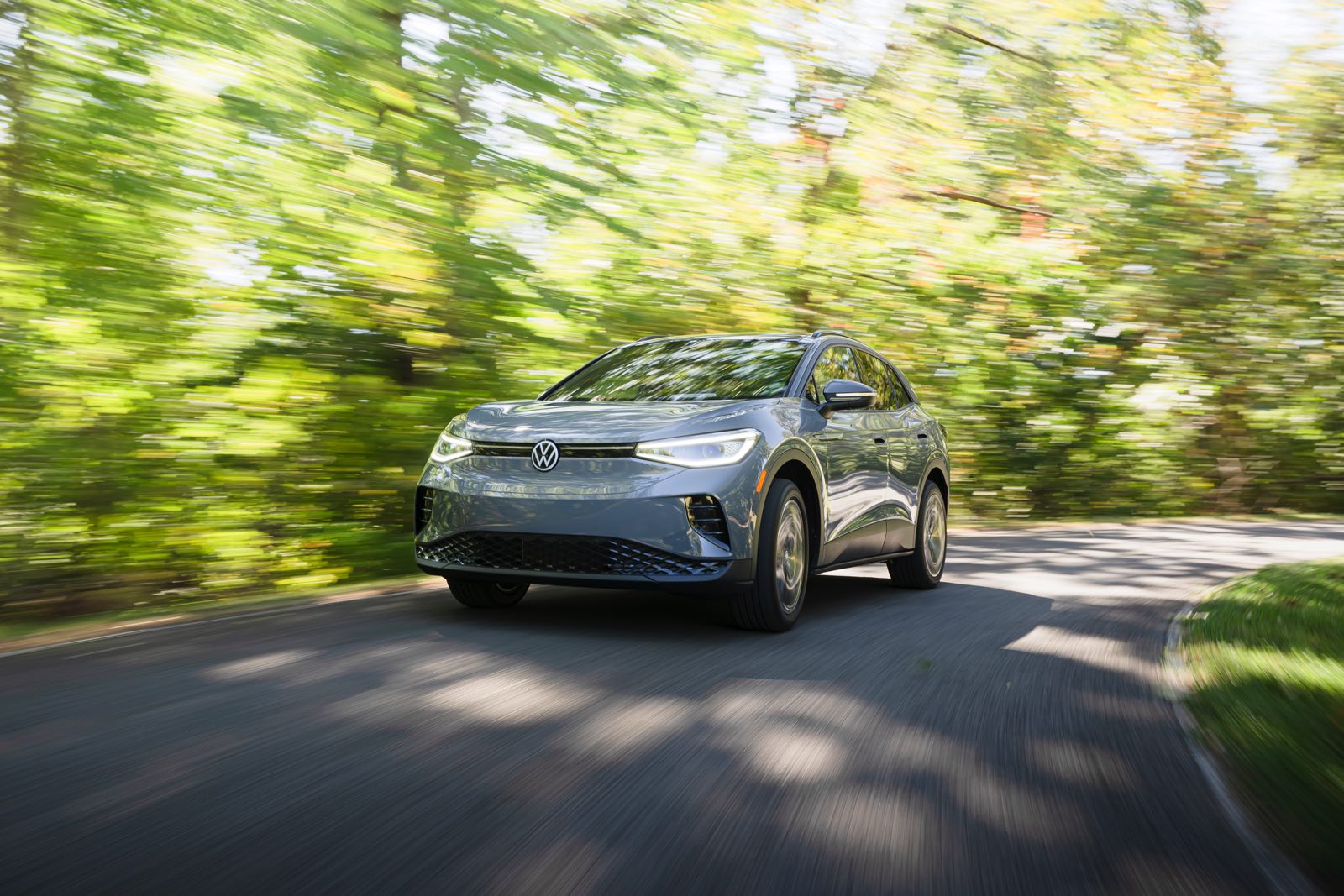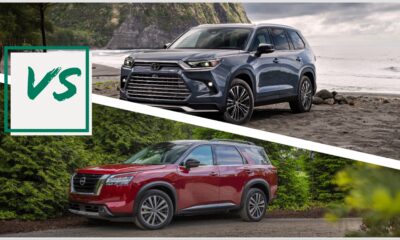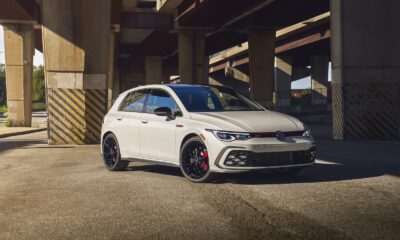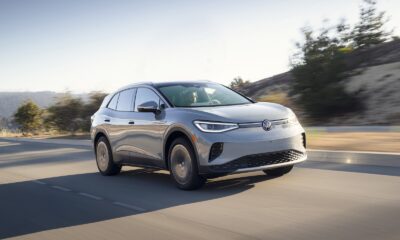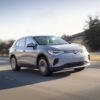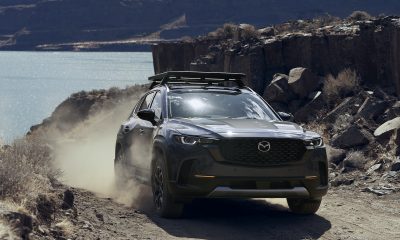Car Reviews
BUYING NOW? The Shoe’s On The Other Foot
BUYING NOW?
The Shoe’s On The Other Foot
As time expired, we punted.
The final week of a year is always seen as the best time to get a great deal on a new car, but Beautiful Bride and I were reared by folks of a conservative bend, who hammered home this axiom: There’s no deal so good it can’t wait a day.
For those entering in medias res, a fancy way of saying “in the middle of the story,” Blue-eyed Beauty and I culminated an 18-month search for our geezermobile, a not-quite fancy term for the first car purchased after retirement. Now it is time to consummate. Or not.
As of now, we’ve chosen ‘not’.
We settled on one of the least popular cars on the market, a Ford Escape PHEV. Those last four letters, for a plug-in hybrid-electric vehicle, were the tipping point. This compact SUV bridges the gap between HEVs (hybrid gas-electrics – like the Toyota Prius) and full-on BEVs, i.e., battery-electric vehicles.
How did we get to the Escape PHEV? We think throwing $100 bills at gas pumps is foolish when needless. Blame our choice of an alternative on those previously referenced parents, who taught that pioneers are easily spotted by the arrows in their backs. EVs are coming, but they are not here yet. My dad always advised me to give new models a few years to work out the bugs. This is yet another piece of parental advice rooted in reality.
At this point, most electric vehicles with track records are high-end luxury models, like Teslas and the Ford F-150 Lightning. A handful of EVs for the middle class, roughly defined as $25,000 to $40,000, are on the market, and more are just over the horizon.
Indeed, 35 new EVs will roll into showrooms in 2023. Among those assembled in the U.S. and thus eligible for up to $7,500 in federal income tax credits are the VW ID4 ($38,790), Nissan Leaf ($30,230), Tesla Cybertruck ($39,990), and Chevy Bolt EUV ($27,200). All would also be eligible for a rebate of $3,500 from the State of Texas if one has forever to wait for the check to arrive…or to even just apply.
Not only do electrics need some seasoning, but we also think that the time to pull the plug on an EV is a few years off because a build-out of the nation’s charging network is in its infancy. There is not, for example, a Level 3 charger in our home town of Texarkana. The nearest is at an EZ Mart in Hope. Huh?
Believe it or not, that is not a big issue. EV owners only need Level 3 chargers, which can bring a car to 80 percent capacity in 20 minutes, when they travel. Level 2 chargers, which run off a 220v outlet, are needed for overnight charging. A PHEV, which provides about 40 miles of electric driving before a hybrid gas-electric system kicks in, requires a 110v outlet, which can bring them up to full charge in a few hours for about the price of a soft drink.
Feed Family – not Big Oil
Blonde Bride and I expect we will rarely need even that with our Escape PHEV. There are many weeks when we don’t cover 40 miles. On the rare occasion when we travel out of town, the Escape’s hybrid system will motor right along at 40 mpg.
The EPA figures that if we drive 15,000 miles a year, we’ll spend about $700 a year on gas, or about half of what a normal car would cost or about 1/6th the cost of a V-8 powered, seven-seat SUV; but we only drive about 4,000 miles a year, which means we will average around 200 mpg and spend in a year what the owner of a new Cadillac Escalade spends in a month for gas. We should average more than 200 mpg.
Twenty to 30 mpg just doesn’t sound as good as it once did.
Another imperative for us can be found on the window sticker. An 8-cylinder Chevrolet Suburban burning premium unleaded will emit 555 grams per mile of greenhouse gas emissions. The Escape PHEV emits less than 70. What reason can there be to put out nearly eight times as many pollutants as is necessary?
That the big vehicles are safer? Believe it or not, science says otherwise. In government and insurance testing, the new Escape outperforms an Expedition or Escalade. You can check it out yourself at the Insurance Institute for Highway Safety.
We are Christians, Blonde Beauty and I, but from Genesis to Psalms to the Prophets, the Old Testament – in a broad sense the Holy book of all the western religions – makes clear that God created everything on this planet for his people and made us the stewards over his creation. To continue to poison the earth that our grandchildren will inherit ought not to be a political issue. Instead, it is a moral one.
Know when to hold ‘em
Having placed an order for a 2023 Escape PHEV for roughly $45,000 at our friendly local Ford dealer, we were confronted with a dilemma: whether to wait until this Spring for our perfect version or jump now for a 2022 soon-to-be-in-stock.
Both would be powered by a Mazda engine and Toyota’s hybrid technology – two reasons why Consumer Reports says the Escape PHEV is as reliable as a Toyota RAV4 Prime. Its Mazda-derived chassis is why Blonde Beauty and I agree with CR that the Escape has the best ride and drive in class. We were also able to select all the driver-assist technology that my Bride says I, in my old age, now require. That we could also select Vapor Blue, to match you-know-whose eyes, which almost justifies a sticker that bumps up against $45,000.
Still, we were tempted to take the 2022 because information last week from the EPA indicated the Escape would lose half of its $6,900 tax credit because the battery was not sourced from a favored trading partner which, in the Deficit Reduction Act means Canada, Mexico or Puerto Rico. On Thursday, information from Ford and the U.S. Treasury Department indicated that the full tax credit will be available through March.
Those goalposts seem to move daily, so we’ll see.
At our last writing, the Escape came with 1.9% financing, which yours correctly posited might soon disappear. It did. The very next day. Ford pumped the subvented financing – a finance rate the manufacturer buys down – to 3.9%. At that point, we decided to follow our hearts.
Thanks to an aesthetic redesign, the 2023 Escape has a more exquisite nose and a nicer interior marked by a larger infotainment screen. Auto marketers say that 3/4th of the buying decision is made not with the executive brain but the lizard brain. We just proved them right. Again.
All of which left us in the same predicament as thousands of new-car buyers last week. Buy now before credit rates go up again, or wait and hope for a better price.
To be honest, hope will never get one a better price. Research, planning, and a little stubbornness will. When the dealership in December told me that paying the full list price was the best one could do in the market, that was true, and so I did not argue.
In three months, that most certainly will not be true and I expect the dealership to be equally respectful of market reality. That hissing sound you hear is the air coming out of used-car prices. Wholesale prices in that market have been falling by a percentage point a week for the past four months as supply has shot up while qualified buyers have left the market.
A telling stat: Fewer than half the used vehicles sent to wholesale auctions are being sold. Instead, they are going back to dealers, who have to pay another month of floor-plan financing while they figure out what to do with them.
In the market for a used car? Bargain until they are willing to let you leave. Even at that, wait a few days to see if they call.
You ain’t seen nothin’ yet.
Yes, there are shortages of chips and other crucial components, but car manufacturers are nearly two years into creative workarounds. Production is up some, but inventories are climbing faster.
To recover increased supply costs – and to discourage dealer gouging – manufacturers late in 2022 sharply boosted retail prices. In the fourth quarter, for example, Ford boosted Escape PHEV prices by an amount nearly equal to the car’s federal income tax credit. At the same time, interest rates shot up. The upshot? Thousands of buyers are telling dealers they can no longer afford the cars they ordered, often at an above-list price.
Prices too high, interest rates too high, thousands facing layoffs – after two spectacularly profitable years, the auto business is facing demand destruction not seen since Jimmy Carter was in office. Then, as of now, the big losers were the auto and housing sectors.
In the car business, the customer isn’t always right, but in tough times those with positive equity trade-ins, substantial down payments, and strong credit are never wrong. We are going to buy the car all right, and the dealer will make money – just not nearly as much.



